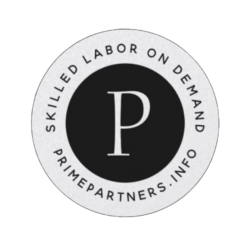Industrial Electrical Foreman Interview Questions and Answers
Overview of Certifications, Educational Background, and Industry Qualifications
Required and Recommended Certifications
- Journeyman Electrician License: Often required, this certification demonstrates proficiency in electrical systems, safety, and compliance with local codes.
- Master Electrician License: Highly recommended for foreman positions, as it indicates advanced knowledge and leadership capabilities.
- OSHA Safety Certification: Demonstrates a commitment to workplace safety and understanding of regulations.
- NEC (National Electrical Code) Certification: Ensures knowledge of the latest electrical codes and standards.
- First Aid/CPR Certification: Essential for handling emergencies on-site.
Educational Background
- High School Diploma or GED: Minimum requirement for most industrial electrical positions.
- Associate Degree in Electrical Technology or related field: Preferred for understanding advanced electrical concepts and systems.
- Bachelor’s Degree in Electrical Engineering or Industrial Technology: Enhances expertise and career advancement opportunities.
Industry Qualifications
- Experience as a Journeyman Electrician: Typically 4-5 years of hands-on experience in industrial settings.
- Leadership Training or Experience: Demonstrates ability to manage teams and projects effectively.
- Project Management Certification (e.g., PMP): Useful for overseeing large projects and coordinating teams.
- Continued Education in Emerging Technologies: Keeps skills relevant with new tools and methods.
Interview Questions and Answers
Technical Questions
What are the key components of an electrical distribution system in an industrial setting?
- Answer:
- Key Components:
- Transformers: Step-up or step-down voltage levels.
- Switchgear: Protects and controls electrical circuits.
- Busbars: Conduct electricity within a switchboard.
- Circuit Breakers and Fuses: Prevent overloads and short circuits.
- Distribution Panels: Distribute electricity to various circuits.
- Examples:
- In a manufacturing plant, transformers adjust voltage to power heavy machinery, while switchgear ensures safe operation by isolating faults.
- Best Practices:
- Regular maintenance schedules to prevent equipment failure.
- Implementation of redundancy systems to ensure continuous operation.
- Common Pitfalls:
- Neglecting to test circuit breakers regularly, leading to unexpected outages.
- Follow-up Points:
- Discuss the importance of grounding in the distribution system and how it affects safety and performance.
- Key Components:
How do you ensure compliance with the National Electrical Code (NEC) in your projects?
- Answer:
- Strategies:
- Regularly review and update knowledge of the NEC.
- Conduct site inspections and audits to ensure adherence to code.
- Provide training sessions for team members on NEC updates.
- Examples:
- Implementing NEC-compliant wiring methods in a new warehouse installation.
- Correcting non-compliant installations discovered during routine checks.
- Best Practices:
- Establish a checklist for NEC compliance to use during project planning and execution.
- Engage in peer reviews and cross-checks for complex installations.
- Common Pitfalls:
- Assuming previous installations are compliant without verification.
- Follow-up Points:
- Discuss how to handle discrepancies between local codes and the NEC.
- Strategies:
Behavioral Questions
Describe a time when you had to manage a conflict within your team. How did you handle it?
- Answer:
- Scenario:
- Conflict arose between two electricians over task assignments on a major project.
- Approach:
- Held a private meeting with both parties to understand their perspectives.
- Facilitated a team discussion to align on roles and responsibilities.
- Implemented a task rotation system to ensure fair workload distribution.
- Outcome:
- Improved team morale and productivity by resolving the conflict amicably.
- Best Practices:
- Encourage open communication and address issues promptly.
- Promote a culture of collaboration and mutual respect.
- Common Pitfalls:
- Ignoring the conflict, which can escalate and disrupt project timelines.
- Follow-up Points:
- Ask about strategies to prevent similar conflicts in the future.
- Scenario:
How do you prioritize safety on the job site?
- Answer:
- Strategies:
- Conduct regular safety training and drills.
- Implement a comprehensive safety checklist for daily operations.
- Encourage a culture of safety where team members feel empowered to speak up.
- Examples:
- Initiating a weekly safety meeting to discuss potential hazards and preventive measures.
- Implementing a “Stop Work Authority” policy allowing any team member to halt operations if unsafe conditions are observed.
- Best Practices:
- Lead by example and adhere strictly to all safety protocols.
- Regularly update safety procedures to incorporate new insights and technologies.
- Common Pitfalls:
- Complacency in safety practices leading to accidents or near misses.
- Follow-up Points:
- Discuss how to handle safety violations and reinforce safety culture.
- Strategies:
Situational Questions
You are assigned to a project with a tight deadline, but you find multiple code violations in the existing setup. What steps would you take?
- Answer:
- Approach:
- Conduct a thorough assessment to document all violations.
- Prioritize violations based on safety risk and project impact.
- Communicate findings to project stakeholders with a proposed action plan.
- Examples:
- On a recent retrofit project, identified outdated wiring that posed a fire hazard and prioritized its replacement.
- Developed a phased correction plan to address violations without significantly delaying the project.
- Best Practices:
- Maintain clear communication with clients and team members about the importance of compliance.
- Seek alternative solutions when immediate correction isn’t feasible, such as temporary fixes or usage restrictions.
- Common Pitfalls:
- Overlooking minor violations that could compound into significant issues later.
- Follow-up Points:
- Discuss strategies for mitigating project delays while ensuring safety and compliance.
- Approach:
How would you handle a situation where a piece of critical equipment fails during peak production hours?
- Answer:
- Immediate Actions:
- Assess the failure to determine if it can be quickly resolved or requires extensive repairs.
- Coordinate with the production team to understand the impact on operations.
- Implement contingency plans, such as rerouting power or utilizing backup equipment.
- Examples:
- During a critical equipment failure at a manufacturing plant, coordinated with maintenance to expedite repairs while minimizing production downtime.
- Best Practices:
- Maintain an updated list of critical spare parts and ensure quick access.
- Plan and conduct regular maintenance to prevent equipment failures.
- Common Pitfalls:
- Focusing solely on immediate fixes without addressing underlying issues.
- Follow-up Points:
- Discuss methods for improving equipment reliability and maintenance schedules.
- Immediate Actions:
Problem-Solving Questions
How would you approach troubleshooting an electrical circuit not performing as expected?
- Answer:
- Step-by-Step Process:
- Begin with a visual inspection to identify obvious issues such as loose connections or damaged components.
- Use diagnostic tools (e.g., multimeters, oscilloscopes) to test for voltage, current, and resistance discrepancies.
- Isolate sections of the circuit to narrow down potential problem areas.
- Examples:
- Identified a faulty breaker causing intermittent power loss by systematically isolating circuit sections and testing.
- Best Practices:
- Document findings and maintain a log of troubleshooting efforts for future reference.
- Engage team members to brainstorm and verify diagnostic results.
- Common Pitfalls:
- Replacing components without verifying faults can lead to unnecessary costs and delays.
- Follow-up Points:
- Discuss preventive measures to avoid similar issues in the future.
- Step-by-Step Process:
You have been informed of a potential safety hazard due to an electrical design flaw. How do you address the situation?
- Answer:
- Approach:
- Conduct an immediate risk assessment to evaluate the severity of the hazard.
- Communicate the issue to all affected parties and initiate corrective actions.
- Consult with engineers and designers to develop a revised plan that mitigates the design flaw.
- Examples:
- Addressed a design flaw in an electrical panel installation that posed a shock hazard by collaborating with the design team to implement a safer configuration.
- Best Practices:
- Maintain open lines of communication with design and engineering teams to facilitate quick resolutions.
- Implement interim safety measures (e.g., barriers, signage) until the flaw is corrected.
- Common Pitfalls:
- Delaying corrective actions due to project timelines or budget constraints.
- Follow-up Points:
- Discuss long-term strategies for improving design processes to prevent future hazards.
- Approach:
This comprehensive guide serves as a resource for candidates preparing for an Industrial Electrical Foreman interview, covering the critical aspects of technical knowledge, leadership capabilities, and problem-solving skills required for the role.
More Industrial Interview Guides
Explore more interview guides for Electrical positions.
Industrial Offshore Electrician Interview Guide
The Industrial Offshore Electrician Interview Guide equips job seekers with essential strategies to excel in intervie...
Industrial Electrical Foreman Interview Questions and Answers
This guide provides job seekers with a comprehensive set of Industrial Electrical Foreman interview questions and ans...
Industrial Master Electrician Interview Help
The Industrial Master Electrician Interview Help guide equips job seekers with essential knowledge and strategies to ...
Industrial Wind Turbine Electrician Interview Guide
The Industrial Wind Turbine Electrician Interview Guide is a comprehensive resource designed to prepare job seekers f...
Industrial Apprentice Electrician Interview Help
The Industrial Apprentice Electrician Interview Help guide equips job seekers with essential insights and strategies ...
Recent Articles
Check out more articles from Best Electrician Jobs about getting hired inthe electrical industry.
Best Job Board for Electricians
Discover the best job board for electricians! Boost your career with insights on salaries, training, and growth!
Improve Your Electrician Job Postings for More Applicants
Discover how to improve your electrician job postings for more applicants! Boost your career with insights on salarie...
What is the Highest Paying Electrician Role?
Discover the highest paying electrician roles and how to prepare for them. Learn about the skills and certifications ...
Industrial Electrician Careers in California
From manufacturing plants to data centers, industrial electricians play a vital role in California's economy. Discove...
Security Technician Interview Questions and Answers
Security technicians are essential in protecting our modern world. Learn what to expect in your Security Technician i...
Featured Jobs
-

- Company
- Prime Partners
- Title and Location
- Cable Technician
- Wyoming, MI
- Employment Type
- FULL_TIME
- Salary
- $25.16-$32.59/HOUR
- Team and Date
- Commercial
- Posted: 04/17/2025
-

- Company
- Prime Partners
- Title and Location
- Apprentice Electrician
- San Diego, CA
- Employment Type
- FULL_TIME
- Salary
- $24-$37/HOUR
- Team and Date
- Commercial
- Posted: 04/17/2025
-

- Company
- Prime Partners
- Title and Location
- Security Alarm Installer
- Mesa, AZ
- Employment Type
- FULL_TIME
- Salary
- $25.81-$30.68/HOUR
- Team and Date
- Commercial
- Posted: 04/17/2025
-
- Company
- Jackson Healthcare
- Title and Location
- Journeyman Electrician
- Alpharetta, GA
- Employment Type
- FULL_TIME
- Salary
- $30.6-$35.86/HOUR
- Team and Date
- Commercial
- Posted: 04/17/2025
-

- Company
- Prime Partners
- Title and Location
- Journeyman Electrician
- Gilbert, AZ
- Employment Type
- FULL_TIME
- Salary
- $40-$55/HOUR
- Team and Date
- Data Center
- Posted: 04/17/2025
-

- Company
- Prime Partners
- Title and Location
- Voice & Data Technician
- Glendale, AZ
- Employment Type
- FULL_TIME
- Salary
- $23-$35/HOUR
- Team and Date
- Commercial
- Posted: 04/17/2025
Best Electrician Jobs
Ready to get started?
Stop worring about manpower. And get back to what you do best.
Best Electrician Jobs is for Everyone
At Best Electrician Jobs, we are dedicated to fostering an inclusive environment that values diverse perspectives, ideas, and backgrounds. We strive to ensure equal employment opportunities for all applicants and employees. Our commitment is to prevent discrimination based on any protected characteristic, including race, color, ancestry, national origin, religion, creed, age, disability (mental and physical), sex, gender, sexual orientation, gender identity, gender expression, medical condition, genetic information, family care or medical leave status, marital status, domestic partner status, and military and veteran status.
We uphold all characteristics protected by US federal, state, or local laws, as well as the laws of the country or jurisdiction where you work.
 Best Electrician Jobs
Best Electrician Jobs